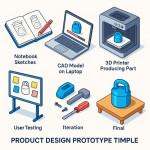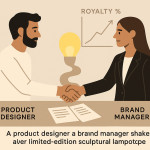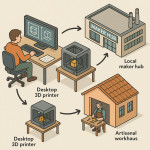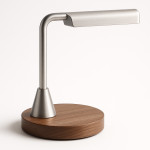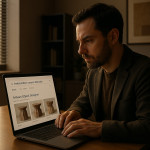Digital twins: boost object designer visibility across online directories
Digital twins—virtual, data-rich replicas of physical objects—are no longer reserved for aerospace giants. Today, freelance and studio-based object designers use them to leapfrog competitors inside talent directories, turning static portfolios into interactive experiences recruiters remember. This guide walks you through creating, publishing and optimising digital twins so your work surfaces first in search filters and shortlists.
Why directories reward digital twins
Directories thrive when buyers find the right maker fast. Listings enriched with digital twins deliver:
- Deeper evaluation: Recruiters rotate, explode or take AR screenshots of your model before booking a call.
- Lower risk perception: Process data (materials, tolerances, sustainability scores) reassures procurement teams.
- Longer dwell time: Interactivity keeps visitors on your page, a positive signal for directory algorithms similar to SEO dwell time metrics.
According to a recent platform benchmark, profiles featuring 3D or AR viewers receive up to 37 % more “save” actions. That engagement pushes them higher in search results—exactly where you want to be.
From concept to twin: a lean workflow
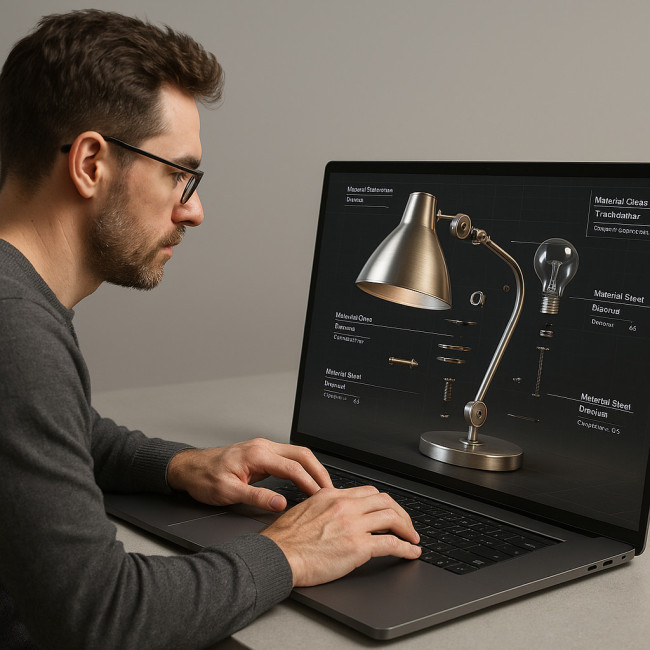
Turning a concept sketch into a convincing digital twin involves far more than a single “export” click. You will iterate through topology cleanup, UV unwrapping, texture baking, metadata tagging and weight-budget optimisation so the final file feels instantaneous inside any browser. Document each step in a version-controlled folder: raw CAD, retopo mesh, texture sets, compressed GLB. Whenever a recruiter drills down, they see a refined asset that loads in seconds yet still broadcasts manufacturing readiness, sustainability credentials and cost transparency. Invest the extra hour polishing polygon flow and naming conventions—your future self will thank you when a director requests last-minute edits during a pitch rehearsal, and you can deliver without scrambling through messy files.
1. Start with production-ready CAD
Export clean geometry directly from your CAD suite (Fusion 360, Rhino or SolidWorks). Remove unnecessary NURBS history, decimate meshes below 100k polygons for silky web performance and bake PBR textures.
2. Attach data layers recruiters crave
- Material origin, recycled content and end-of-life plan (links nicely to sustainability sourcing plans)
- Prototype milestones aligned with prototype timeline benchmarks
- Estimated unit cost and minimum order quantity
3. Export in GLB or USDZ
These open formats retain texture maps and metadata while loading natively in WebXR, iOS Quick Look and most directory viewers.
4. Optimise for speed
Target <5 MB models. Compress textures to 2k max and use Draco mesh compression. A 3-second load time equals lower bounce rates and better ranking.
Publishing inside directories: step-by-step
- Check viewer compatibility. Leading platforms like Artfolio Craft Designers accept GLB/GLTF up to 50 MB and auto-generate AR previews.
- Embed call-outs. Use hotspots to reveal material swaps or exploded views without extra clicks.
- Link to auxiliary assets. Secure spec sheets, high-res renders and BOM files inside a cloud folder or a dedicated digital asset vault.
Metadata that makes twins discoverable
| Field | Standard Entry | Twin-Optimised Entry |
|---|---|---|
| Title | “Aluminium Desk Lamp” | “Aluminium Desk Lamp – AR Digital Twin + Recycled 6063 Alloy” |
| Tags | lamp, aluminium | digital twin, AR, aluminium, recycled metal, desk lighting |
| Media | JPEG gallery | GLB twin + photoreal renders (see mock-up guide) |
Boosting filter reach
Many directories now include check-boxes such as “View in AR” or “Interactive 3D”. By selecting those options, your profile enters narrower but high-intent search funnels. Combine them with location or eco-badge filters for even sharper matchmaking.
Case study: 28 % more enquiries in four weeks
An independent designer uploaded twins for a ceramic Bluetooth speaker line. Key moves:
- Embedded manufacturing tolerances as custom properties.
- Added sustainability narrative in AR labels.
- Updated listing headline to include “Digital Twin”.
Result: Profile saves rose from 46 to 59 per week, and enquiry forms jumped 28 %. Time invested: six hours including render passes.
Common pitfalls (and quick fixes)
- Oversized files: Designers often export 8K textures. Stick to 2K; recruiters view on 6-inch screens.
- Missing alt text: Every twin still needs descriptive alt text (“3D digital twin of recycled aluminium lamp”) for accessibility and SEO.
- No mobile testing: Always open your twin on average 4G speeds before publishing.
Advanced twin tactics
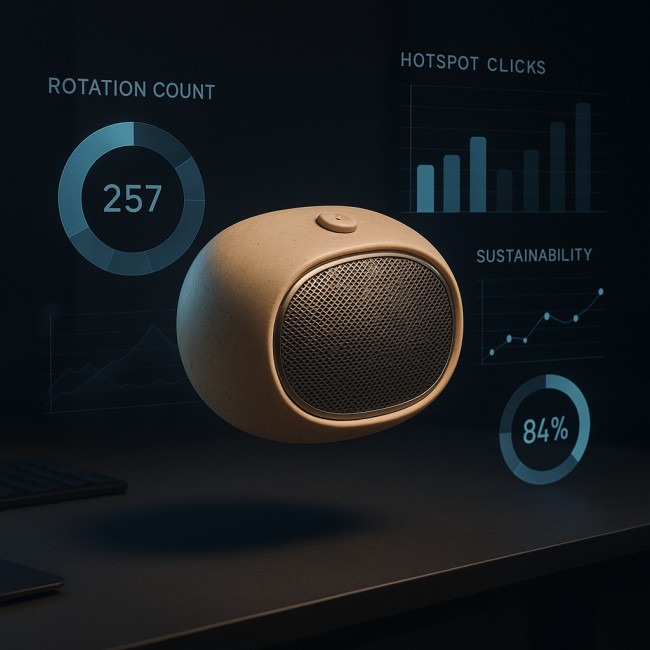
Once your baseline twins are live and generating traffic, shift focus to automation and insight. Craft Python scripts that auto-decimate meshes, bake lightmaps and inject JSON-LD metadata so new products hit directories in minutes rather than days. Layer in event tracking with Google Analytics or platform-native APIs to capture rotation velocity, zoom depth, AR launches and hotspot dwell times. These micro-signals reveal which materials fascinate buyers, which angles convert, and when performance bottlenecks lose impatient art directors scrolling on mobile. Feed the findings back into file-size budgeting, thumbnail A/B tests and value-prop copy tweaks. Over a quarter, iterative adjustments like swapping thumbnail lighting or renaming a hotspot from “Eco Stats” to “Carbon Cut” can nudge engagement metrics by double digits, compounding your directory ranking advantage.
Batch conversion with scripts
Automate texture baking and mesh decimation using Blender's Python API. Batch workflows shave hours off large collections.
Integrate analytics
Add Google Analytics events or directory-native tracking to measure rotation, zoom or hotspot clicks. Iterate headlines or call-outs based on real engagement, similar to tips in SEO quick wins for object designers.
FAQ
- Do I need expensive software to create digital twins?
- No. Blender (free) exports GLB/GLTF perfectly. Pair it with open-source texture tools like Material Maker.
- Will directories charge extra hosting fees for 3D files?
- Most mainstream platforms absorb the cost because interactive content drives traffic. Always review storage caps (typically 100 MB per listing).
- How can I protect my intellectual property?
- Upload low-resolution meshes, watermark textures subtly and lock download permissions in the directory dashboard.
- What's the ideal number of twins per portfolio?
- Feature 5-8 flagship pieces. Quality and loading speed outweigh quantity.
- Can digital twins help with sustainability pitches?
- Absolutely. Embed carbon footprint data and recycled content percentages; eco-conscious recruiters filter for these metrics.
Ready to create your first digital twin?
Interactive models are rapidly becoming table stakes. Follow the workflow above, start small and measure results. Your reward: higher ranking, better-qualified enquiries and a portfolio that proves you're ahead of the curve.
Next step: Upload one hero piece as a twin this week, track saves for 30 days and iterate. Your visibility will speak for itself.

